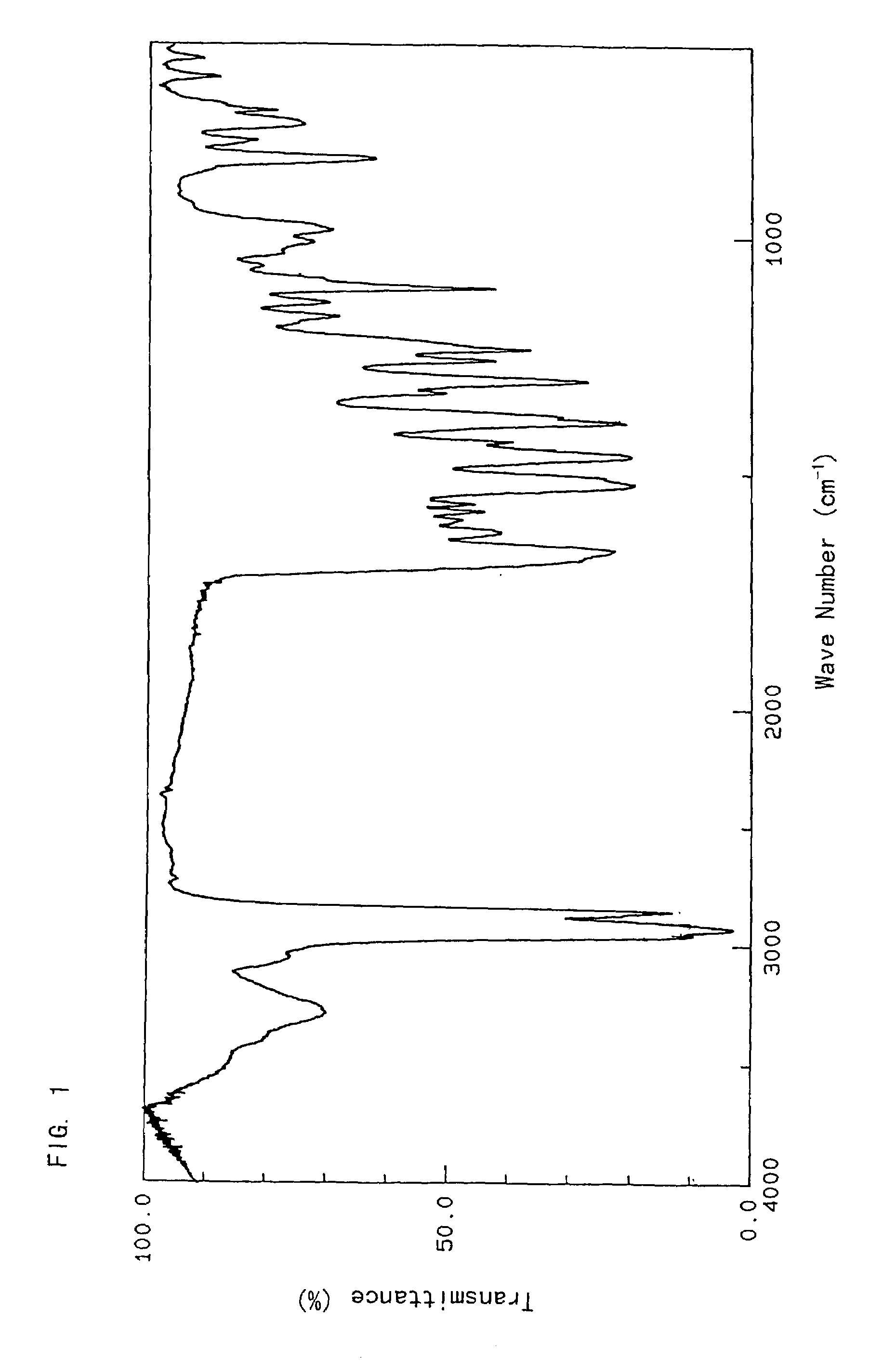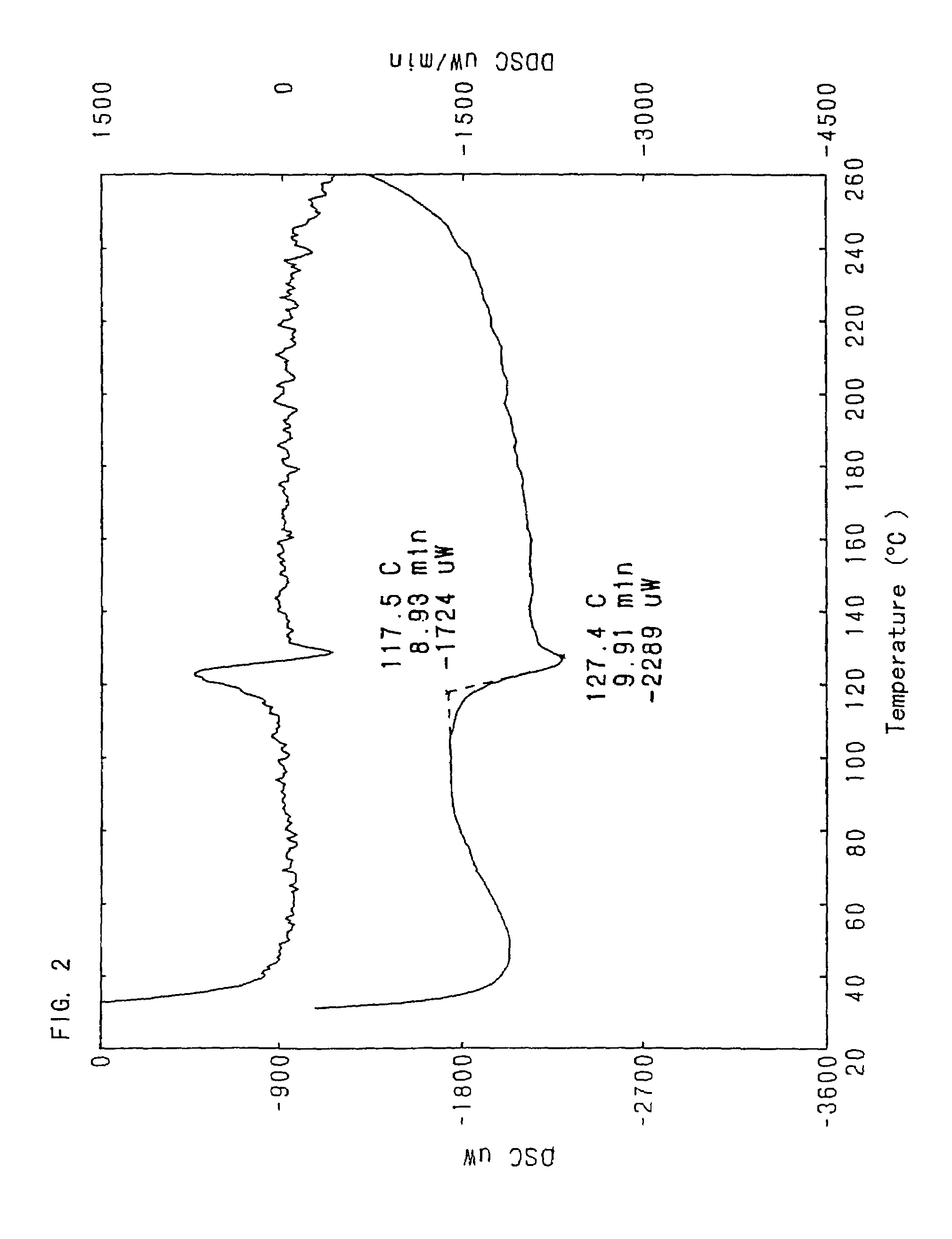Vitreous form of known bradykinin antagonist
a technology of bradykinin and vitreous form, which is applied in the direction of biocide, immunological disorders, drug compositions, etc., can solve the problems of poor solid stability, poor releasability, and inability to produce stable quality
- Summary
- Abstract
- Description
- Claims
- Application Information
AI Technical Summary
Benefits of technology
Problems solved by technology
Method used
Image
Examples
preparation 1
[0040]To a mixture of 8-[3-(N-glycyl-N-methylamino)-2,6-dichlorobenzyloxy]-2-methylquinoline (100 mg), (E)-3-(6-acetamidopyridin-3-yl)acrylic acid (56.1 mg) and N,N-dimethylformamide (2 ml) were added 1-hydroxybenzotriazole (43.4 mg) and 1-ethyl-3-(3-dimethylaminopropyl)carbodiimide hydrochloride (56.9 mg) in a nitrogen stream at 0° C., and the resulting mixture was stirred at ambient temperature for 2 hours. The reaction mixture was poured into water, and extracted with chloroform. The organic layer was washed with an aqueous solution of saturated sodium hydrogencarbonate, water and brine successively, and dried over magnesium sulfate, and thereafter the solvent was removed under reduced pressure. The residue was purified by preparative thin-layer chromatography (methanol:dichloromethane=1:10, v / v), and solidified with diethyl ether and ethyl acetate to give 8-[3-[N-[(E)-3-(6-acetamidopyridin-3-yl)acryloylglycyl]-N-methylamino]-2,6-dichlorobenzyloxy]-2methylquinoline (FR173657) (78...
preparation 2
[0042]FR173657 (7 g) was added to methanol (720 ml) at 60° C., and stirred under reflux for 5 minutes. The mixture was cooled to below 30° C., and stirred for 2 hours at the range of 20 to 30° C. to give a precipitate. The mixture containing crystalline precipitate was filtered, and the obtained crystalline precipitate was washed with methanol (14 ml) and dried in vacuo at 40° C. to give a crude anhydrous crystal of FR173657 (6.3 g) (hereinafter referred to as crude FR173657 crystal). The crystal contained about 5% methanol.
preparation 3
[0043]To a mixture of the crude FR173657 crystal (100 g) and pure water (500 ml) was added concentrated hydrochloric acid (28.1 ml) with stirring at below 10° C. to dissolve the crystal. Carbon powder (5 g) was added thereto, and the mixture was stirred for 2.5 hours. The carbon powder was filtered off, and washed with pure water (200 ml) and concentrated hydrochloric acid (1.4 ml). The resulting filtrate was added to a mixture of acetone (700 ml) and triethylamine (35.87 g) at 55° C., stirred at the same temperature for 5 minutes, and then refluxed for 20 minutes. After the mixture was cooled to 40° C., the crystal was collected by filtration. The crystal was washed with 50% acetone, and dried in vacuo to give a crystal of FR173657 hydrate (crystal type A) (88.7 g).[0044]Infrared absorption spectrum[0045]As shown in FIG. 3
Preparation 4
[0046]To a mixture of the crude FR173657 crystal (50 g) and pure water (250 ml) was added concentrated hydrochloric acid (14.1 ml) with stirring at 5...
PUM
| Property | Measurement | Unit |
|---|---|---|
| Temperature | aaaaa | aaaaa |
| Cooling rate | aaaaa | aaaaa |
| Mass | aaaaa | aaaaa |
Abstract
Description
Claims
Application Information
 Login to View More
Login to View More - R&D
- Intellectual Property
- Life Sciences
- Materials
- Tech Scout
- Unparalleled Data Quality
- Higher Quality Content
- 60% Fewer Hallucinations
Browse by: Latest US Patents, China's latest patents, Technical Efficacy Thesaurus, Application Domain, Technology Topic, Popular Technical Reports.
© 2025 PatSnap. All rights reserved.Legal|Privacy policy|Modern Slavery Act Transparency Statement|Sitemap|About US| Contact US: help@patsnap.com



